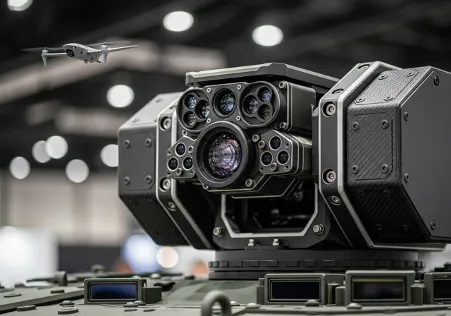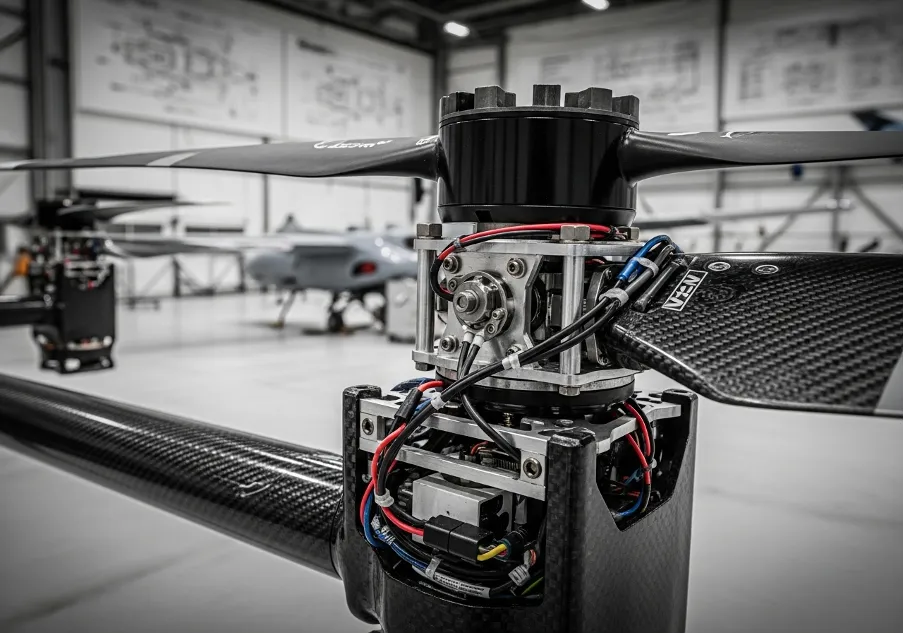
The Art of Jamming Drone Signals
Look at the Modern Drone Jammer System
The proliferation of unmanned aerial vehicles (UAVs) in military and civilian spheres has fundamentally altered tactical considerations on the battlefield and in secure zones. Their deployment for reconnaissance, targeted strikes, or simple nuisance has necessitated the development of equally sophisticated countermeasures. Among the most prevalent of these is electronic disruption, a field where a specialized drone jammer serves as a primary tool for airspace denial and protection of sensitive assets. These devices are not about physically destroying the drone but severing its connection to its operator, effectively neutralizing the threat without kinetic force.
This approach hinges on disrupting the radio frequency (RF) signals that form the invisible tether between a UAV and its ground control station. By broadcasting a powerful, targeted noise signal, a drone signal jammer can overwhelm the drone's delicate receivers. This interference forces the drone into one of its pre-programmed failsafe modes — it might attempt to return to its point of origin, land on the spot, or simply hover until its power is depleted. The specific outcome depends on the drone's programming, but in every case, control is wrested from the hostile operator, rendering the aircraft inert as a threat.
The Principles of RF Disruption and Jamming Methods
At its core, the technology is a focused application of electronic warfare. The process of drone signal jamming involves transmitting disruptive signals on the same frequencies the UAV uses for its command and control (C2) link, video downlink, and GPS navigation. The objective is to increase the noise level to a point where the drone's onboard systems can no longer distinguish the operator's commands from the interference. This requires precise knowledge of the frequencies in use, which vary between commercial and military-grade drones.
Most commercial and prosumer drones operate on unlicensed ISM bands — primarily 2.4 GHz and 5.8 GHz. This standardization makes them particularly vulnerable. An anti drone jammer designed for these frequencies can be highly effective against a wide range of off-the-shelf systems. The complexity escalates significantly when dealing with military UAVs, which often employ advanced techniques to resist such interference. These defensive layers can include:
- frequency-hopping spread spectrum (FHSS), where the drone and controller rapidly switch frequencies in a predetermined pattern;
- encrypted communication protocols that are harder to spoof or disrupt without breaking the encryption;
- the use of multiple frequency bands simultaneously for redundancy.
Confronting these advanced threats requires a more intelligent and adaptive drone jammer system that can detect, classify, and counter specific signal types in real-time. This is a far cry from simply blasting noise across a wide frequency spectrum.
Equipment Types and Tactical Deployment
The physical form of these devices varies as widely as their intended use cases. The act of drone jamming can be performed by units ranging from large, stationary installations to portable, man-carried systems. The most widely recognized format is arguably the handheld drone jammer gun, a rifle-shaped device that allows an operator to aim and project a directional beam of RF energy at a specific target. This is ideal for point defense, such as protecting a convoy or a small forward operating base.
Less conspicuous but equally important are omnidirectional systems that provide a protective bubble over a wider area, like a critical infrastructure site. These are often integrated into a larger security network that includes detection systems like radar and acoustic sensors. We are also seeing the emergence of the jammer drone itself — a UAV specifically designed to approach and disrupt other drones, offering a mobile and proactive countermeasure.
Targeting Frequencies and Overcoming Evasion
Success is contingent on targeting the correct drone frequency. While 2.4 GHz is common for control, 5.8 GHz is often used for video feeds. GPS signals, which are much weaker, are broadcast from satellites on dedicated frequencies (like the L1 band at 1575.42 MHz) and are relatively easy to overpower. A versatile drone disruptor must be capable of targeting multiple bands at once to fully disable a drone's operational capabilities.
Advanced systems do not just jam; they can also engage in "spoofing," where they imitate the controller's signal to take over the drone completely. To be effective, countermeasures must contend with the complex evasion tactics that drone manufacturers are building into their platforms. Some of the key challenges for jammers include:
- drones that can switch to autonomous, pre-programmed flight paths if their GPS or control link is lost;
- systems that use highly directional antennas, making them less susceptible to off-axis interference;
- the growing use of non-standard or encrypted communication links that are difficult to identify.
A professional drone frequency jammer is therefore not a simple brute-force tool but a sophisticated piece of electronic equipment that must be faster and smarter than the technology it is designed to defeat. This is precisely why a true military drone jammer is in a different league from its commercial counterparts, possessing the power and agility to counter encrypted, frequency-agile military UAVs.
Regulatory Landscape and Operational Constraints
The practice of jamming drone signals is tightly regulated in most parts of the world. Broadcasting on RF frequencies is typically governed by national communications authorities, such as the FCC in the United States. Unlicensed use of jammers is illegal and can result in severe penalties, as stray signals can interfere with critical civilian and emergency communications, including aviation control and cell networks.
This brings up a frequent question — are drone jammers legal for use by anyone other than federal agencies? In almost all jurisdictions, the answer is a firm "no." Their use is restricted to military and specific government entities under controlled circumstances. A military jammer operates under a completely different legal framework, often dictated by rules of engagement in a conflict zone rather than civilian law. The ongoing development of drone jamming technology is therefore paired with an equally complex evolution in policy and doctrine to ensure these tools are used effectively and responsibly.
Integrated Systems and the Future of C-UAS
Ultimately, jamming is just one piece of the counter-UAS (C-UAS) puzzle. Modern defense strategies favor a layered approach where different technologies work in concert. These systems often begin with detection and tracking — using radar, thermal cameras, and RF sensors — before any action is taken. These other tools, not just electronic jammers, form a complete defensive web. When people ask how to block drone signal, they are often only thinking of the final step, but identification is just as critical.
An effective jammer for drones is a necessary component, but it might be paired with kinetic solutions (like nets or projectiles) or even high-energy lasers for physical destruction when necessary. The market has responded to this need, and it is not difficult to find a supposed drone jammer for sale online, though these devices are often illegal to own or operate and may lack the power and sophistication to counter anything but the most basic consumer drones. Their existence, however, speaks to the perceived need for such defensive measures at all levels of security.
Learn more about alternative systems and related products from Prodefence in Counter Drone Technologies.
Trusted Worldwide
Operating in more than 50 countries, we provide cutting-edge defense solutions that ensure your safety to every corner of the globe.
Get Advice From Our Experts
Please complete the feedback form to gain exclusive access to our catalog showcasing models that are not available on our website
We’re here to assist you with any inquiries, support, or information you need. Whether you're interested in our defense products, looking to collaborate, or simply have a question, our team is ready to help.







































